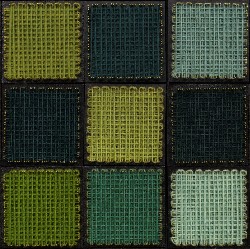Dear Readers:
Welcome to the Turkey Red Journal. This June will be the twenty-fifth anniversary of the Turkey Red Journal. When it first started in 1995, the TRJ was a simple two-page black and white newsletter published to handout at the Nature's Dyes Conference at Fort Collins, Colorado. It grew from there to a color publication and then in 2007 went to an online publication. I want to thank all our contributors and all the dedicated readers that have made the journal such success and a joy to publish. I have decided that this will be the last edition of the Turkey Red Journal. The TRJ will be available online for the foreseeable future and back issues of the hardcopy issues are still available. I will be continuing to work in the field, writing about natural dyes and creating work inspired by endless possibilities in this field.
Since many of us are spending more time at home, I thought it would be good to include reviews of some recently published books that you might want to add to your libraries. John Marshall, a regular contributor to the Turkey Red Journal, has published a new book on Japanese textiles, A Collector's Guide to Japanese Textiles: Indigo. John has so generously shared his wealth of information on indigo dyed/painted Japanese textiles. In addition, since we are not able to attend workshops at this time, John will be offering online classes starting this spring. Visit his website: http://www.johnmarshall.to for more information. Sasha Duerr's new book, Natural Palettes, Inspiration from Plant-Based Colors, is a natural dyes delight. It's filled with photographs and inspiration to explore and experiment with local flora. The book is due to be released at the end of April. I know many of you have read The Art and Science of Natural Dyes, by Joy Boutrup and Catharine Ellis; it worth highlighting for its clearly written how's and why's of natural dye.
We have two articles contributed by readers. Iris Sullivan Daire is an artist, educator and owner of Dream Bird Studio. In her article, "A Fellowship of Blue - Local Indigo on the Oregon Coast", Iris shares with us her experimentations in creating a natural fermentation vat in Oregon. Her vats are created with locally grown or locally sourced materials: Japanese indigo (Persicaria tinctorial), crushed lime from baked oyster shells for pH, and Salal berries (Gaultheria shallon) for reduction.
In the second article, "The Pleasures and Pitfalls of Naturally Dyeing Linen Yarn", Claudia Gosse writes about her adventures in dyeing linen yarn for her daughter Ellie, a textile designer in Winchester, England. Drawing on her experiences at a few natural dye workshops, coupled with readings and experimentation, Claudia shares with us the knowledge she has gained in how to mordant and dye linen yarn.
It is with great sadness that I share with you the passing of Michele Wipplinger in February of this year. Michele was a mentor to many of us natural dyers. I first took a class from her in 1990 at the Textile Art Center in Chicago and continued to study with her for many years. She will live on in all of us through our continued work in the natural dye field.
Back issues of the print version of the TRJ are still available for purchase. Contact me directly for further information.
As always, a special thanks to Bob Feldman, our copy editor and webmaster, for all his hard work and support with the Turkey Red Journal.
Pamela FeldmanEditor and Publisher
www.pamelafeldman.com
 Turkey Red Journal
Turkey Red Journal
